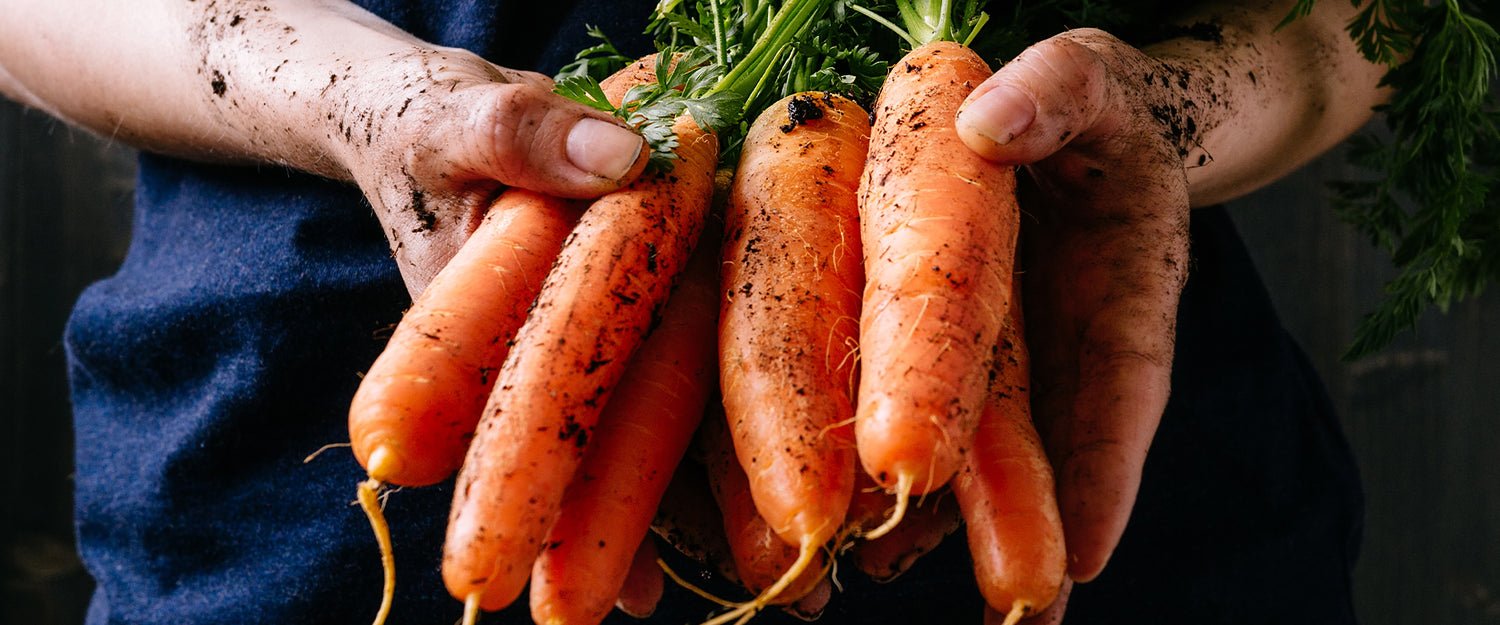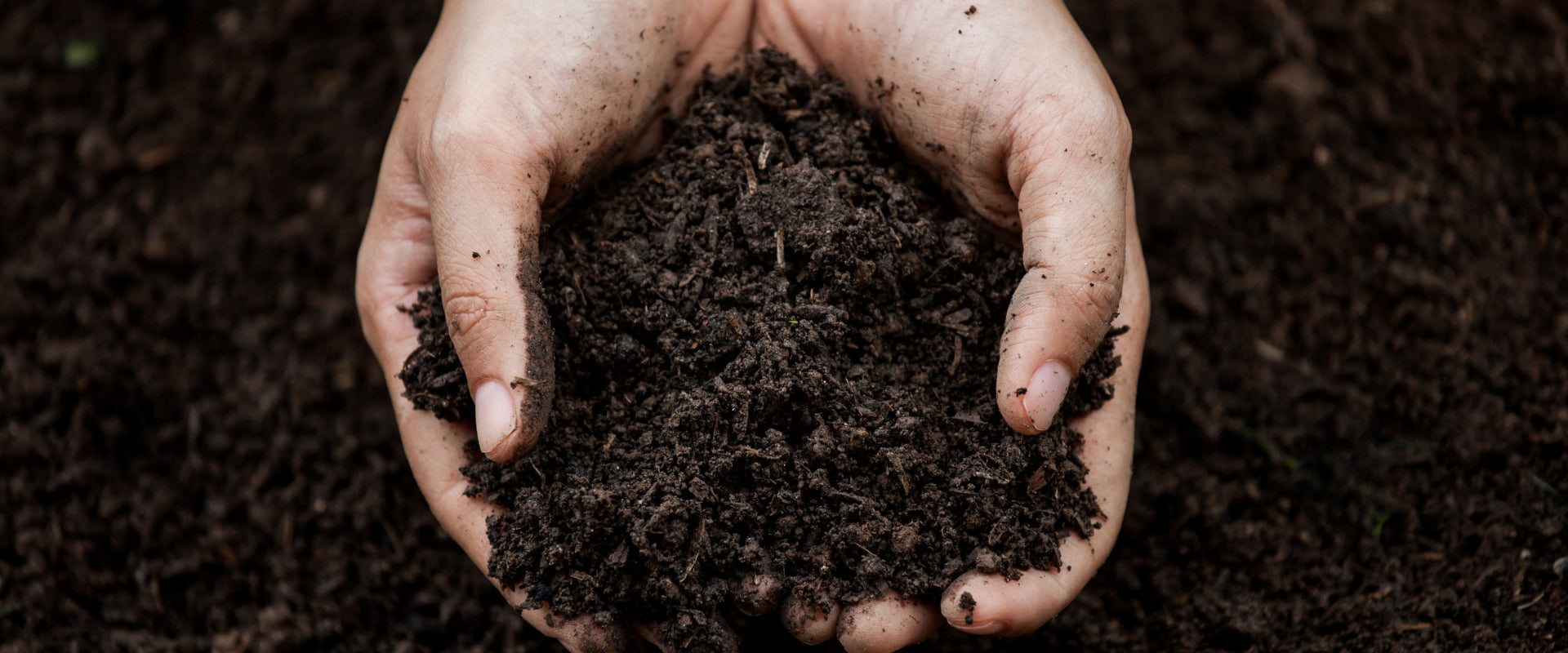You don’t need a farm to practice regenerative agriculture. A garden works just fine.
Regenerative agriculture has been getting a ton of attention lately, and with good reason. It’s a way of growing crops that:
- restores soil health (which is a big deal, considering 50 percent of soil today is degraded)
- combats climate change (by keeping carbon locked in the soil instead of in our atmosphere)
- produces food that’s richer in nutrients (and healthier for us!)
When you think “regenerative agriculture,” you may picture fields of different crops stretching as far as the eye can see, with bees and butterflies darting here and there and livestock nibbling at weeds. But regenerative agriculture isn’t just for farms. You can—and absolutely should—incorporate regenerative principles and practices into your own garden.
Whether you’ve already got a decent-sized home garden, want to build a few raised beds, or have no land at all but do have a balcony or patio, you can garden regeneratively. You’ll want to follow some typical good gardening practices, practices including
- choosing a spot that gets a few hours of sun every day
- watering and weeding regularly
- selecting organic and non-GMO seeds and seedlings to get started
From there, you can follow these surprisingly simple steps to make a carbon-storing, food-growing, soil-building regenerative garden.
-
Plan your planting.
A key practice in regenerative agriculture is keeping living roots in the ground as much as possible. This helps soil maintain its structure and ensures water and nutrient cycling keeps ticking along.
If your growing season and chosen crops allow, consider planting multiple crops in succession. Plan to harvest and replant on the same day if possible. It’s also a good idea to choose different plants each time, rather than growing the same plant in the same spot over and over.
-
Leave the soil as undisturbed as possible.
Even if you’re a relatively inexperienced gardener, you likely have a hazy notion that you need to churn up the soil before planting, a process called “tilling.” If you’re a more seasoned gardener, you might already have a rototiller at the ready.
Here’s the thing: You don’t need to till before planting.
In fact, it’s almost always better for the soil, and ultimately for your crops, if you don’t. Think about it. Does tearing up your soil, destroying its structure and the delicate fungal networks, earthworms, and other critters that help make soil rich—and releasing carbon in the process—seem like a good idea?
Instead, you can improve soil health with no-till gardening. No-till gardening uses practices like gently aerating (or “fluffing up”) the soil with simple tools rather than fully turning over the soil. Add some layers of organic matter like mulch and compost (see #3 and #4 below), and you’ve got a perfect environment for growing your prized lettuces—no soil destruction required.
-
Cover your soil.
Your soil needs armor! Keeping it covered helps protect it from eroding. It also reduces the amount of watering and weeding you’ll need to do. Win-win! Try to cover all the soil you can, even the pathways between your garden’s rows. A few inches of mulch (think wood chips, newspaper, dead leaves, etc.) can do wonders.
You may also want to consider planting “cover crops” now and then: plants that aren’t for you to eat, but that are ultra beneficial for soil health—like clover.
-
Say ‘yes’ to compost and ‘no’ to chemicals.
One of the major components of regenerative agriculture is already in your fridge and scattered around your yard. Compost your kitchen scraps and other organic matter, like lawn clippings, and you’ll get an all-you-can-eat buffet—otherwise known as organic fertilizer—for your crops.
Using compost as fertilizer saves you money on synthetic fertilizers and prevents organic matter from going to landfills. (Currently, roughly 30 percent of what we throw away is organic matter that could be useful compost!) Compost is also far healthier for you and the planet than chemical fertilizers. (FYI, you’ll want to avoid harsh chemicals, whether in pesticide or fertilizer form, as much as possible in your regenerative garden.)
-
Encourage biodiversity (especially pollinators!).
Regenerative agriculture doesn’t just improve what’s on your plate. It improves entire ecosystems. You can do your part by planting some pollinator-friendly friendly plants (and avoiding those chemical pesticides!). These could be plants that produce fruits or seeds you and your family eat, like tomatoes and sunflowers, or blossoming plants that purely cater to pollinators, like milkweed or black-eyed Susan.
As a good rule of thumb, prioritize native and perennial plants when choosing pollinator-friendly additions. You’ll also want to choose plants with different blooming times (so there’s always a source of food for your bee and butterfly friends).
Ready to get planting?




